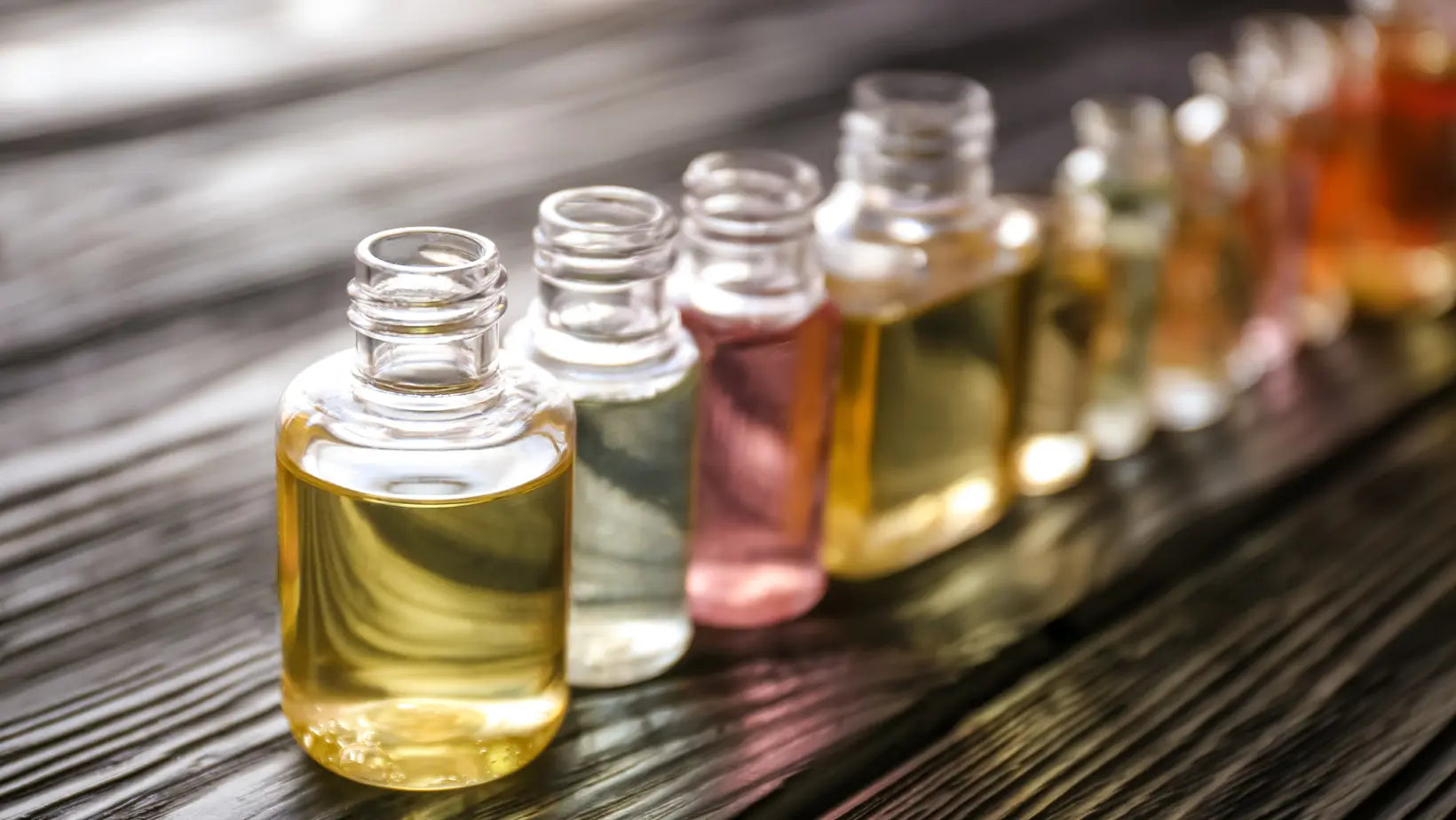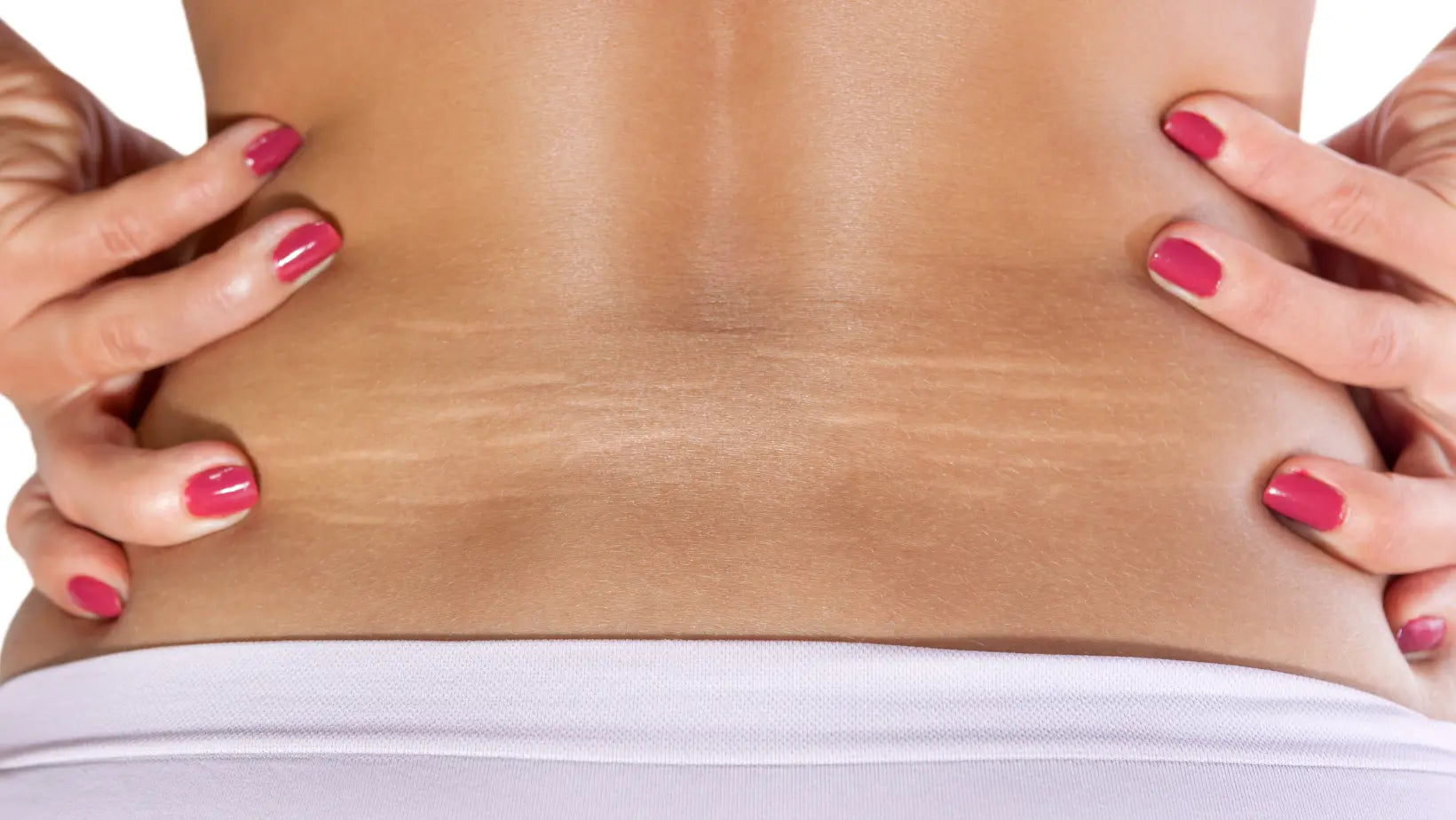
Stretch marks and menopause: Hormonal changes and their impact on the skin
Menopause is a natural and inevitable stage in your life, marking the end of the menstrual cycle and bringing with it a series of significant hormonal changes. During this period, the levels of estrogen and progesterone in your body gradually decrease, which can affect many aspects of your health, including your skin. Although menopause can be a challenge, it is a natural transition, and understanding the changes you are going through can help you adapt to them more easily.
During menopause, you will likely notice that your skin starts to dry out more easily, lose its elasticity, and in some cases, become thinner and fragile. These hormonal changes can promote the appearance of stretch marks, especially in areas where the skin is more prone to stretching, such as the abdomen, hips, or thighs. Stretch marks can be a common problem during this period, along with other manifestations like loss of firmness and increased dryness. Managing these effects through proper care and using the right products can make a significant difference in maintaining the health and beauty of your skin.
Hormonal changes in menopause
Decrease in estrogen levels
As you enter menopause, your body experiences a gradual decrease in estrogen levels, one of the most important hormones for your skin's health. Estrogen plays a crucial role in maintaining the elasticity and firmness of the skin, as it stimulates the production of collagen and elastin – the proteins that provide the skin's structure and suppleness. Once estrogen levels drop, the production of these key elements significantly decreases, making the skin more vulnerable to stretching and, consequently, to the appearance of stretch marks.
Impact on the skin
This reduction in estrogen leads not only to the loss of skin firmness but also to its thinning and dehydration. Without an adequate amount of collagen and elastin, the skin loses its ability to maintain its structure and regenerate effectively. As a result, the skin becomes drier, more fragile, and more prone to the appearance of stretch marks and other visible signs of aging, such as wrinkles. This hormonal change causes the skin to no longer withstand stretching as easily, resulting in unsightly lines on the skin's surface. To prevent and combat these effects, it is essential to adapt your skin care routine, focusing on intense hydration and regeneration.
Why do stretch marks appear during menopause?
Reduced skin elasticity

As you progress through the menopausal period, the levels of collagen and elastin in the skin decrease significantly. Collagen is a structural protein that provides the skin with strength and firmness, while elastin gives it suppleness and the ability to return to its original shape after stretching. During menopause, due to the decrease in estrogen levels, the body produces less collagen and elastin. This reduction affects the skin's elasticity, making it more vulnerable to stretching and much more prone to collagen fiber breakage. When the skin can no longer cope with rapid stretching or changes in body volume, stretch marks appear – those visible lines that indicate the breaking of fibers in the deeper layers of the skin.
The role of dehydration
In addition to decreased elasticity, menopause also brings a reduction in the skin's ability to retain moisture, leading to dehydration. Dryness is a common symptom during menopause, also caused by hormonal changes that disrupt the skin's natural protective barrier. Dehydrated skin becomes more fragile and prone to cracks, being less able to withstand tension and stretching. Chronic dehydration causes the skin to lose not only suppleness but also its regenerative capacity, increasing the risk of developing stretch marks, especially in areas that frequently undergo volume changes, such as the abdomen, hips, and thighs. To prevent these effects, it is essential to constantly hydrate your skin, both from the inside, through proper nutrition, and from the outside, with moisturizing creams.
How to prevent and treat stretch marks during menopause
Intense hydration
To prevent dryness and fragility of the skin during menopause, it is essential to follow a daily routine of intensive hydration. Dehydrated skin is much more prone to stretch marks, and proper hydration helps restore the protective barrier and maintain elasticity.
An ideal product for this purpose is Royal Rich range Body Butter, which is formulated to provide deep and long-lasting hydration. Rich in natural ingredients that nourish and regenerate the skin, this body butter helps maintain skin suppleness, preventing the appearance of stretch marks. When applied regularly, it helps restore elasticity and gives the skin a healthy and well-hydrated appearance. Make sure to use it daily, especially after showering, when the skin absorbs active ingredients best.
Products with collagen and elastin
As the natural production of collagen and elastin decreases during menopause, it is important to compensate for this loss by using products that stimulate skin regeneration. Choose creams or lotions that contain active ingredients that encourage the production of collagen and elastin, essential for maintaining firm and elastic skin. These products not only prevent the appearance of stretch marks but also help reduce the appearance of existing ones by improving skin texture and stimulating cellular regeneration.
Dietary supplements and diet
In addition to external hydration and topical products, diet plays an essential role in the health of your skin. Consume foods rich in vitamins and minerals that support skin elasticity and prevent its deterioration. Vitamin A stimulates cell regeneration, vitamin C is crucial for collagen synthesis, and vitamin E protects the skin against free radicals. Also, Omega-3 and Omega-6 fatty acids help maintain the skin hydrated and protected. Supplements containing these vitamins and essential fatty acids can be very helpful in maintaining skin health during menopause, providing additional support for preventing stretch marks and improving the overall appearance of the skin.
Skin Care: Recommended Products
Creams and lotions for stretch marks
To effectively prevent and treat stretch marks, it is important to use specially formulated products that support the elasticity and firmness of the skin. Creams and lotions designed for stretch marks contain active ingredients that stimulate the production of collagen and elastin, essential for maintaining skin suppleness. An excellent product you can include in your routine is Crema Stretch, which has been specially created to combat the appearance of stretch marks and reduce the look of existing ones. This cream helps improve skin elasticity and provides intense hydration, thus preventing the breaking of collagen fibers and the appearance of stretch marks. By using Crema Stretch regularly, you will notice firmer, more supple skin with visibly diminished stretch marks.
Daily care routine
A daily skincare routine is essential to keep the skin healthy and well-hydrated. It should include gentle exfoliation steps that remove dead cells and allow products to be absorbed more effectively. Gentle exfoliation, done 1-2 times a week, improves skin texture and stimulates cell regeneration, preparing the skin for deep hydration.

After exfoliating, apply a moisturizing cream or a nutrient-rich oil, such as Stretch Cream or the body butter from the Royal Rich range. These products help maintain the skin's elasticity, preventing dryness and fragility. Regular use of these products will strengthen the skin's protective barrier, providing it with the necessary hydration to cope with hormonal changes and preventing the formation of stretch marks. Therefore, incorporate these products into your daily routine to keep your skin healthy, smooth, and elastic.
Menopause brings significant changes to your body, including your skin. The decrease in the production of estrogen, collagen, and elastin makes the skin more vulnerable to dryness, thinning, and the appearance of stretch marks. However, with a proper care routine, you can prevent and reduce the effects of these changes. Intensive hydration, using products that stimulate collagen production, and adopting a nutrient-rich diet are essential steps to keep your skin healthy and elastic during this transition period.
Don't let hormonal changes affect your self-confidence! Try Stretch Cream, specially formulated to improve skin elasticity and reduce stretch marks. Add it to your daily care routine and give your skin the hydration it needs. Take care of your skin and enjoy a smooth transition through menopause!



Leave a comment
This site is protected by hCaptcha and the hCaptcha Privacy Policy and Terms of Service apply.